How to run a sales call (in the early days)
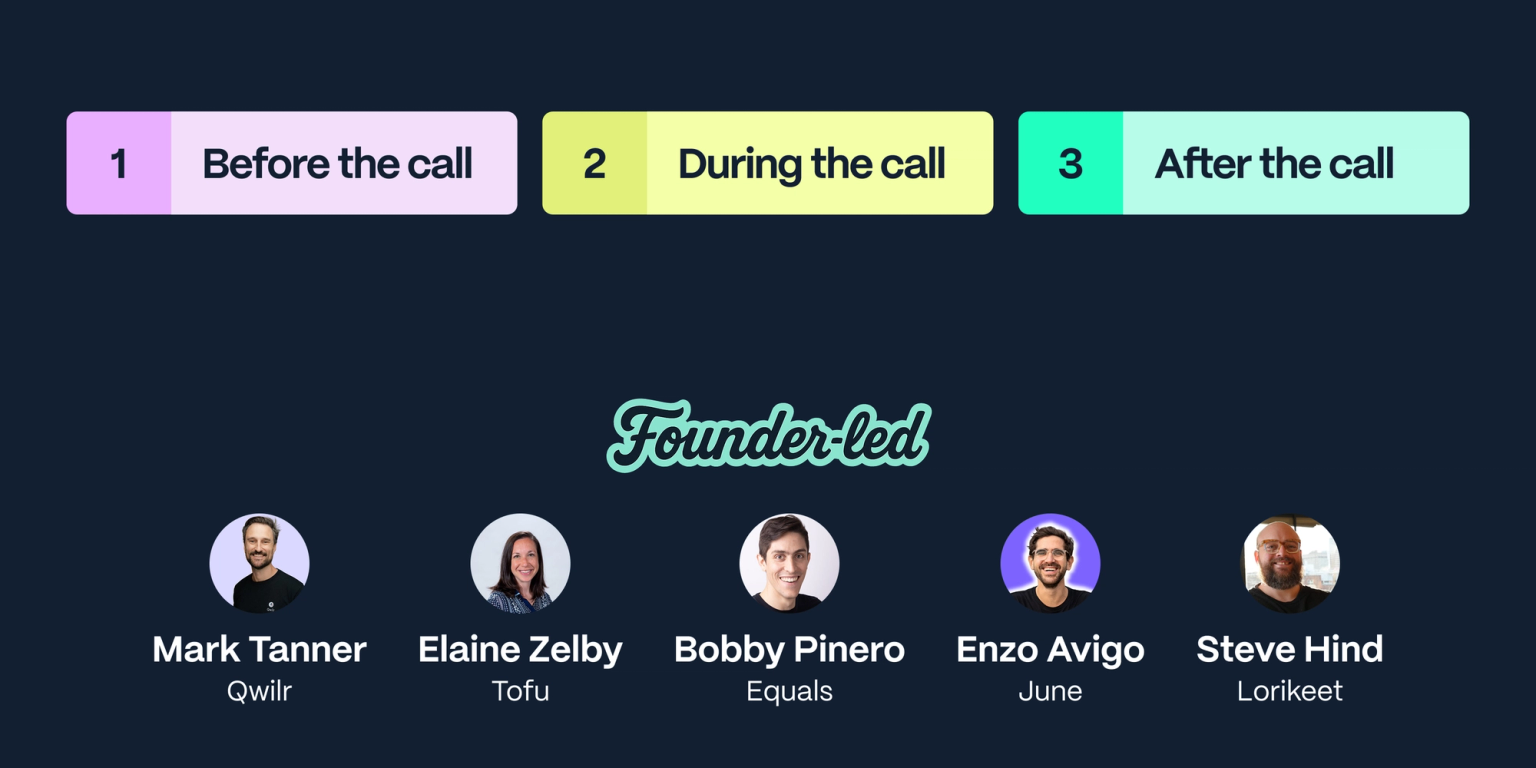
The first rule of sales calls? Don’t treat them like sales calls.
Approach them as a continuous discovery machine. You won't close many deals at first (trust me, I know), but you’ll get something more important: direction.

They will feel more like customer research interviews at first. But eventually, the deals will come.
The last seven years of doing this at Iteratively and now Clarify have given me a framework for how to run these early sales calls. Let's break it down.
1. Before the call
Get in the consultative mindset
When I first started, the only thing I felt semi-confident in was running a sales call. My first job was a UX researcher, and those early sales calls felt like product research. That framing saved me. The number one sales mistake founders make is to jump on a call and tell people why they should buy their product. You aren’t there to convince them of anything. You are there to listen.
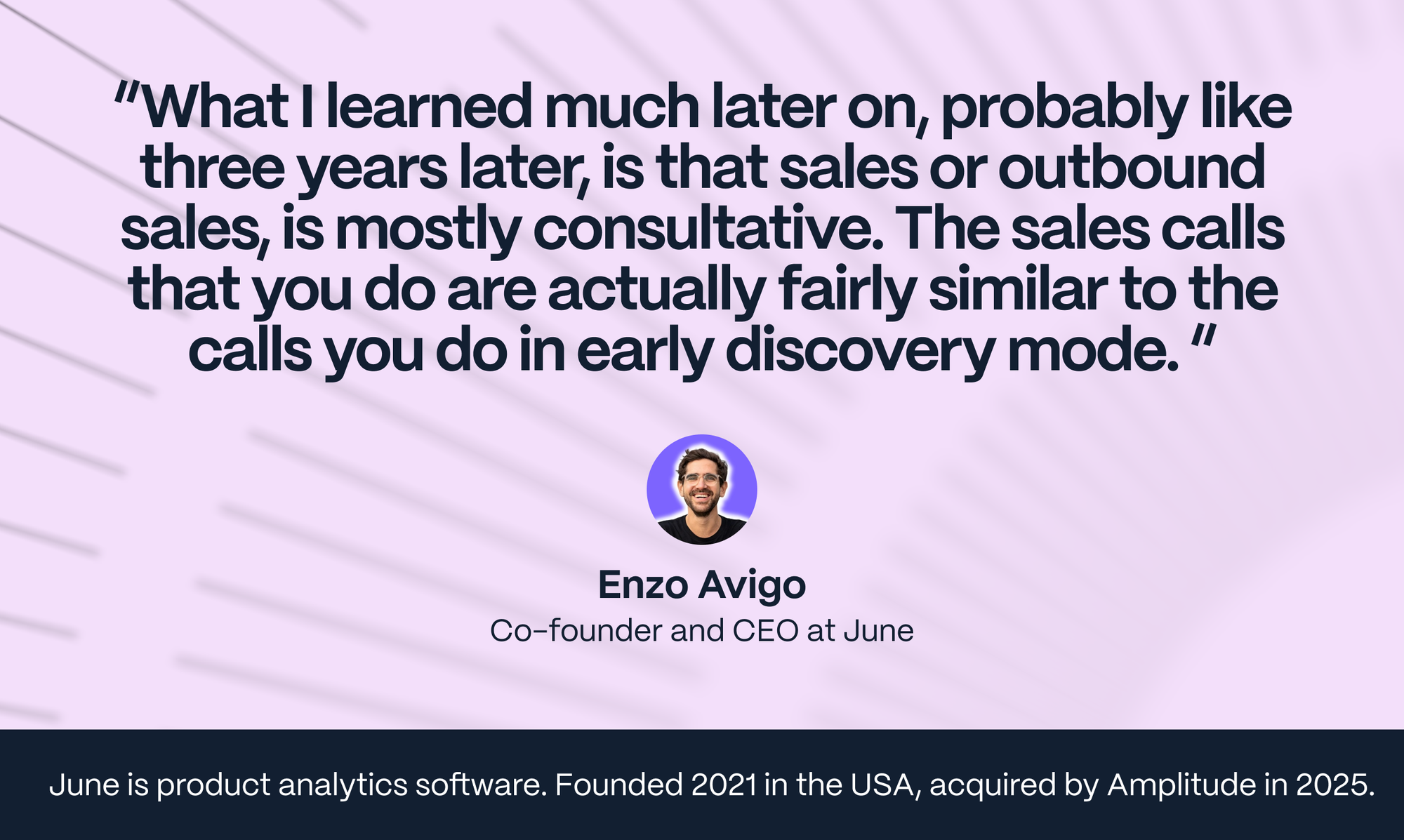
Because what you're trying to do is really to assess the problems that people have. In both ways, you’re trying to get something from someone, except that the ‘something’ is much bigger, it's paying for it.
- Enzo Avigo, co-founder and CEO of June
And as any researcher knows, you have to think like a scientist — constantly testing and adjusting your hypotheses.
Register and track your assumptions
At this stage, you haven't quite nailed your product/market fit. You have a list of risky assumptions you’ve made that you need to validate or discard. Each sales call will provide more guidance on whether these assumptions were correct. Assumptions like:
- Target market
- Must-have features
- Use cases
- GTM positioning
Before you start your founder-led sales process, write your assumptions down to serve as your guide. Each call will shed some additional light on how you need to adjust your assumptions. I kept an assumption registry like this during Clarify's early days.
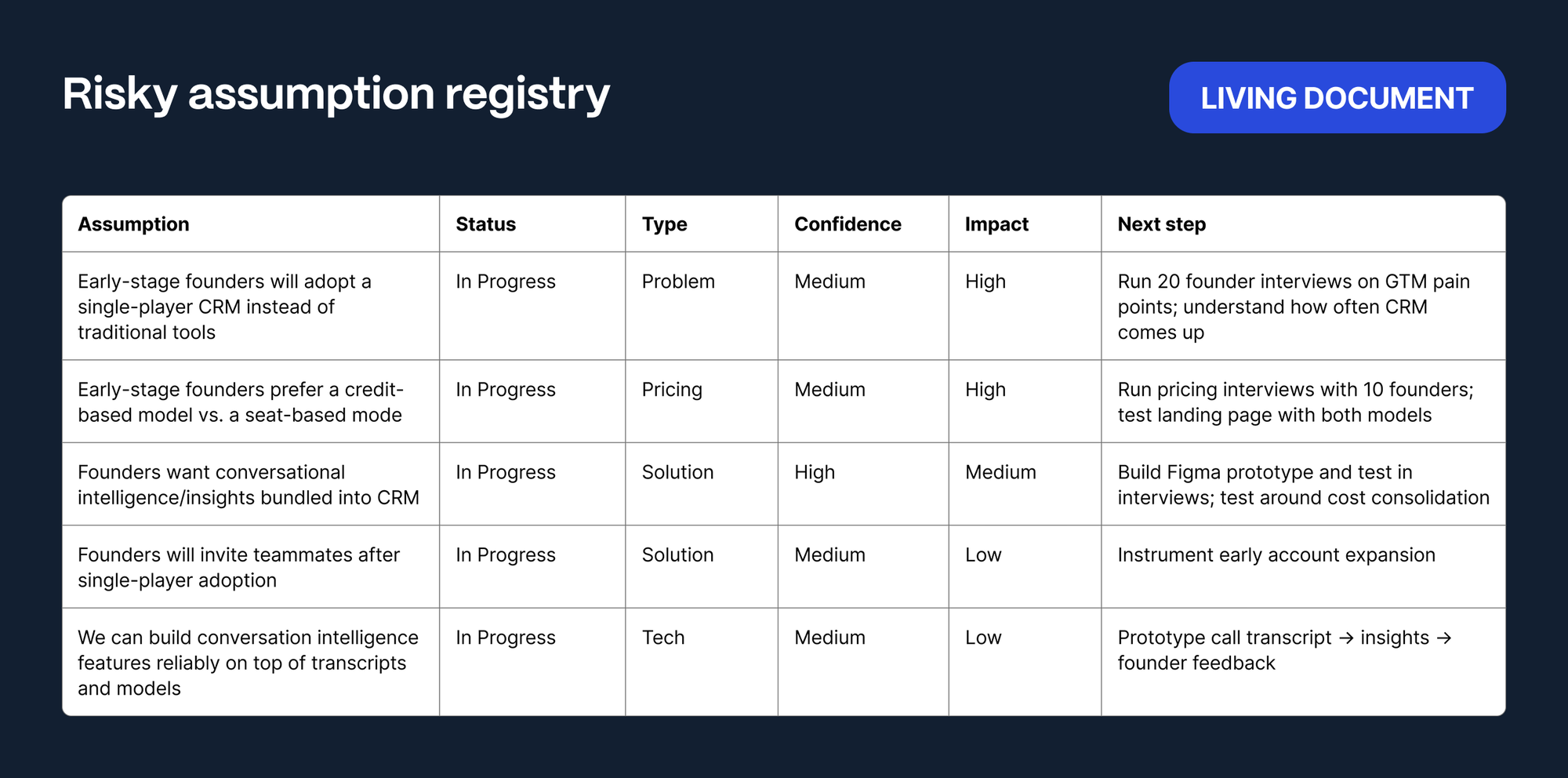
For example, when validating an assumption on pricing versus credits or seats, we tested pricing pages with both models — credit-based and seat-based. With each new insight, I’d update my risky assumption registry (we settled on usage pricing, fwiw).
Take money, but settle for time
Someone agreeing to be a design or beta partner that delivers regular feedback is a win. Our early access program was free. We didn’t charge any money. In our eyes, the customers were building the product to the point they would pay us.
Running a sales call is different when you haven’t nailed product-market fit yet. Sure, you’ll take a sale, but an equally important currency is feedback. Consider trading some or part of what you’re charging for dedicated feedback sessions.
Everybody’s first version of the product usually sucks. When you find people excited to help you build the product as a design partner and join the rocket ship, that’s invaluable.
2. During the call
When you ask a prospect to get on a call, you’re in charge. If someone agrees to spend an hour with you, you’re already in the driver's seat. Don’t waste the call by winging it. Show up ready to run through a process.
(It's also a subtle but important signal that you’re trustworthy.)
Call do’s and dont’s
You may be used to pitching your product to early investors and employees, but now you must shift into a different mode.
“Every instinct I had was to try to tell them the answer,” Bobby Pinero, co-founder of Equals, told me. “Instead, it turned to ‘how do I just ask a question where they are saying the answer as opposed to I'm saying the answer?’”
If you're not a former UX researcher like me, here are some things to keep in mind:
Do:
✅ Record your interviews.
Your memory is not reliable and rewatching can help you see where you can improve.
✅ Use open-ended questions and follow up with “why?”.
“Laddering” like this is how you get the second and third layer of insights.
✅ Listen more than you talk.
Aim for 80/20 and don’t be afraid of a few seconds of silence.
✅ Take notes on facts and actions, not opinions.
They are more actionable.
✅ Have colleagues check your observations.
Your product isn't the only thing you’re iterating. Flag your own blind spots.
Don’t:
🚫 Interview friends and coworkers.
You’re looking for candor.
🚫 Pitch your story or solution.
In the early days you won’t close many sales talking to people for the first time. Remember time is just as good as money (for now).
🚫 Ask leading questions.
Like, "Wouldn’t it be better if…?”
🚫 Ask hypotheticals.
For example, "Would you use this if…?”
🚫 Settle.
Ask “why?” as a follow up. Ask the same question in different ways.
🚫 Accept compliments as evidence.
Everyone can be nice until it’s time to pay.
Have a question toolbox
Having a good question toolbox is like having GPS. You can always veer off course to chase a particularly interesting insight, but your question toolbox gives you a place to return to.
Your goal is to unearth burning pain points, ones they may not realize they have that you can address with your company and product. Here are some questions I use often:
Setting the table:
- Can you describe your role?
- What does success look like for you in your role?
- What are your goals for this year?
Product insights:
- What’s the hardest part about [doing X / achieving success]?
- Tell me a story about the last time you tried to [do X].
- What happened?
- When was the last time this happened?
- Why was it a problem for you?
- How big of a problem is it?
- What was the hardest part about doing that?
- How do you solve this problem now?
- What’s not ideal about your current solution?
Marketing insights:
- Where do you hang out online?
- Can you introduce us to a few other people like you?
- What do people not talk about enough when it comes to [your problem]?
- Where do you get industry news and advice?
- What newsletters/YouTube channels do you subscribe to and enjoy?
- Do you belong to any communities (Slack, Discord, Reddit etc.)?
Show a custom demo
If you want to improve your win rate, make sure your demo is a one-of-one. AI now makes bespoke demos easier, so you may want to challenge the status quo if you subscribe to the advice of “don’t show demos on a sales call.”
In some cases, that demo can be during the first call.
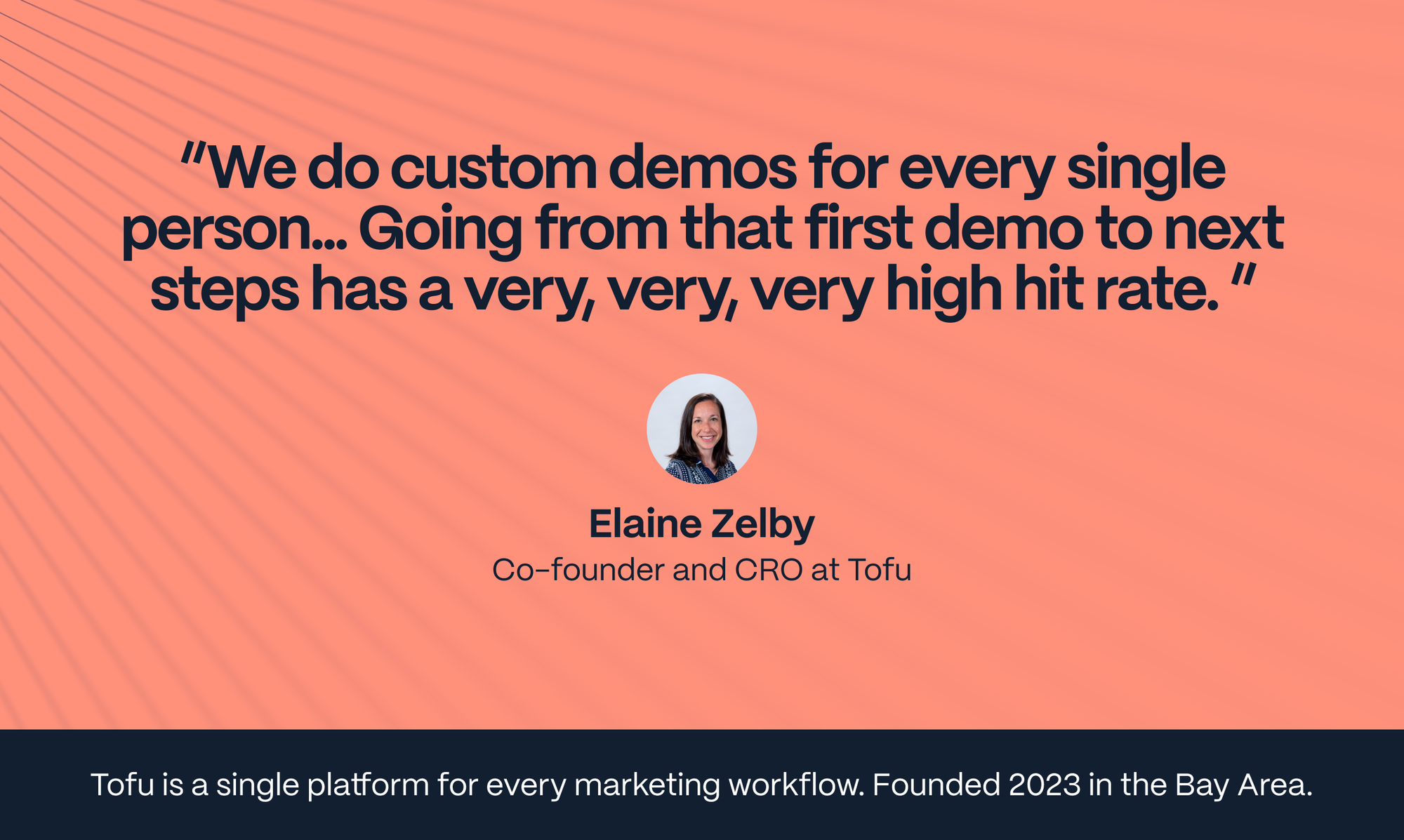
A very cool party trick with our product is we do custom demos for every single person. We set up an instance that has...Leads and accounts that look like who they would target. We have a process that goes and figures out a list of 10 accounts that looks like somebody the prospect would target.
By showing them a really contextual experience, they can actually understand how it would work for them. We just found that so much more effective than us demoing using an instance that's trained on us or trained on something else.
Going from that first demo to next steps has a very, very, very high hit rate.
- Elaine Zelby, co-founder and CRO at Tofu
Sometimes, assigning leads "homework" can be good. By spreading the process across multiple calls you can first focus on qualifying and they set yourself up to nail a custom demo. Lorikeet has a preliminary discovery call that they then follow up with a custom-made demo.
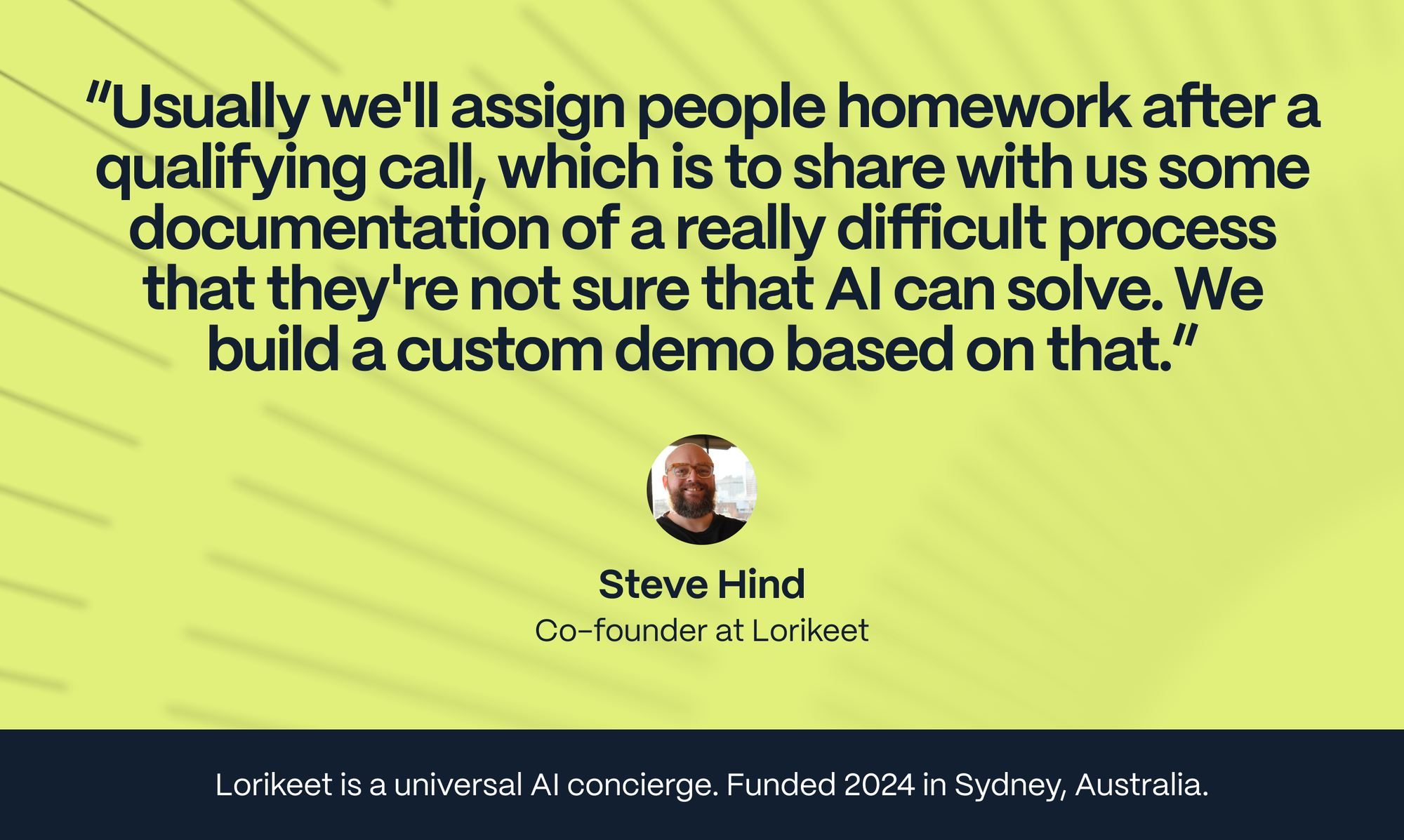
Almost always we will show up to the demo with a Lorikeet sandbox instance trained on the customer's material. We don't do generic demos.
We want that demo moment to be really about challenging their perceptions about how good the AI can be by showing them something that they didn't think AI would be able to do. That obviously takes some time and we do product and engineering work to make that faster, but we think it's really high ROI to be able to do something like that.
- Steve Hind, co-founder and CEO of Lorikeet
3. After the call
I’ve seen it over and over: you have one call and are feeling good. But then the prospect just ghosts you. Here’s how to keep it moving and get closure – one way or another.
Meet the gatekeepers
While enthusiasm is high, keep the process moving and ask to get in front of other stakeholders.
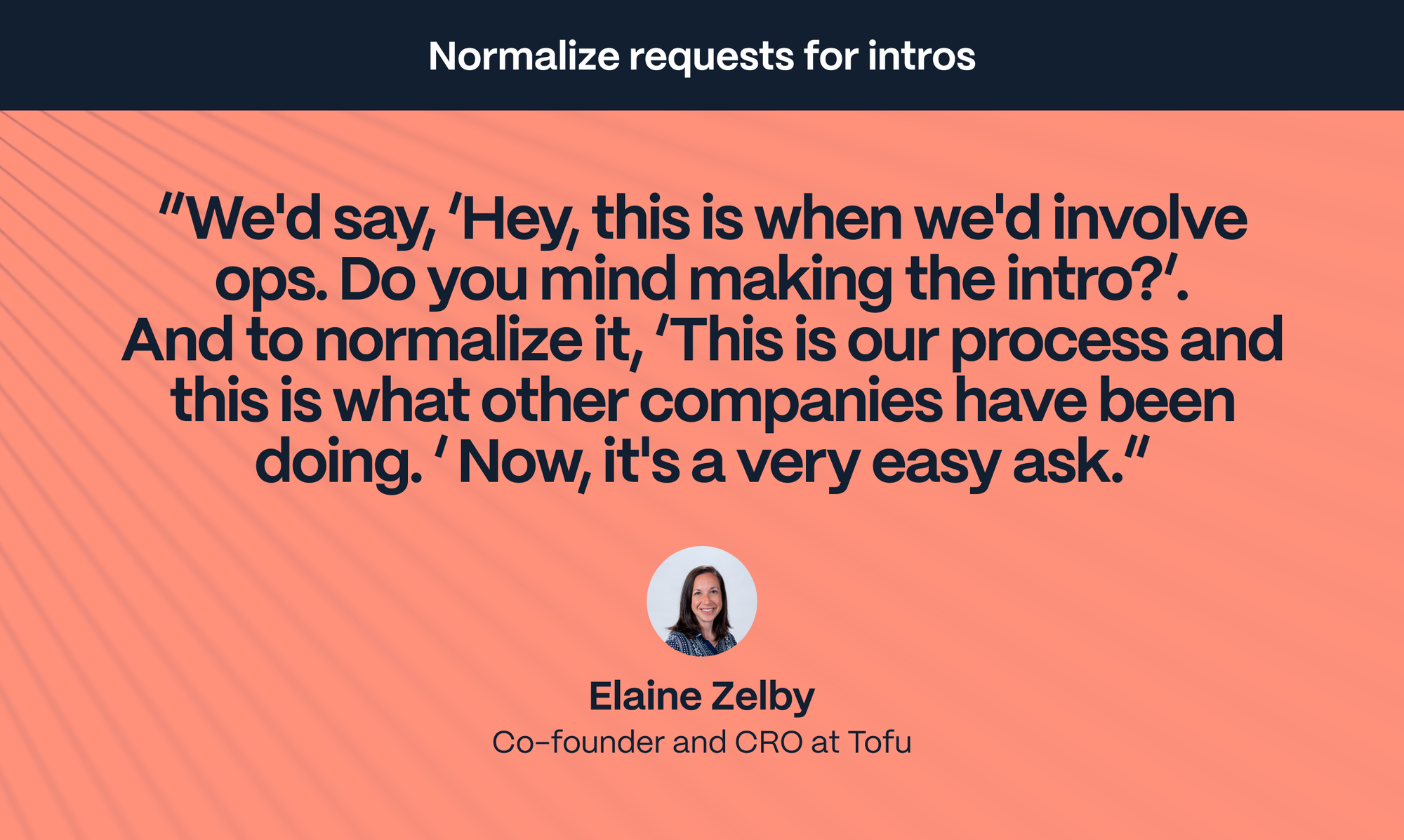
Keep the momentum going
If you showed them an epic demo, great. Now hand them the keys and give them a chance to tinker.
Equals' hands over the ARR forecasting model they build for each prospect. Bobby says, “We're like, ‘Great, you can play with it for a week. And if you want to keep it after that, sign the contract.’ It was that bet on doing the work upfront and getting them set up and getting them something of value before they commit to anything that really flipped the sales process for us.”
It's why Lorikeet turns their demo into a proof of concept to be stress tested by the organization. They assign a single engineer to stay with the prospect from the proof of concept through to signature.
It’s an up front investment, but it makes the sales process smoother and eventual onboarding easier.
Extracting (and tracking) the insights
I realized early in my career that relying on memory was a joke. Now every call is recorded, structured, and compared.
This is one way we eat our own dogfood, using Clarify and other tools to capture and organize what we’ve learned on the call. Whether you choose Clarify or not, you need three steps in this workflow:
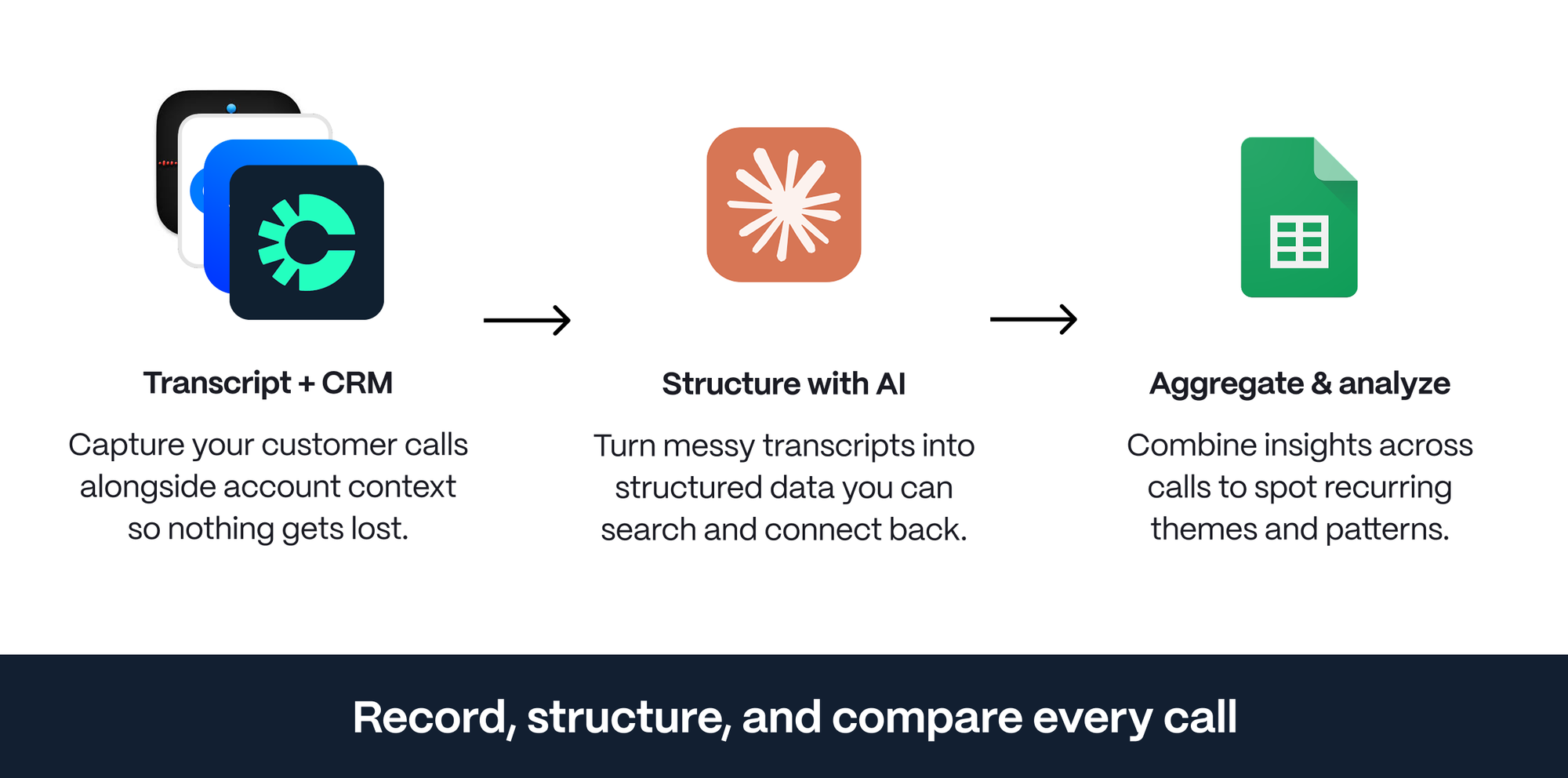
I use AI to turn some standard call elements into JSON. Things like: painpoints, current stack, and context about the person and company
With call data structured similarly, I can then compare apples to apples. Here is a chart of customer call themes I was able to make to start to track trends:
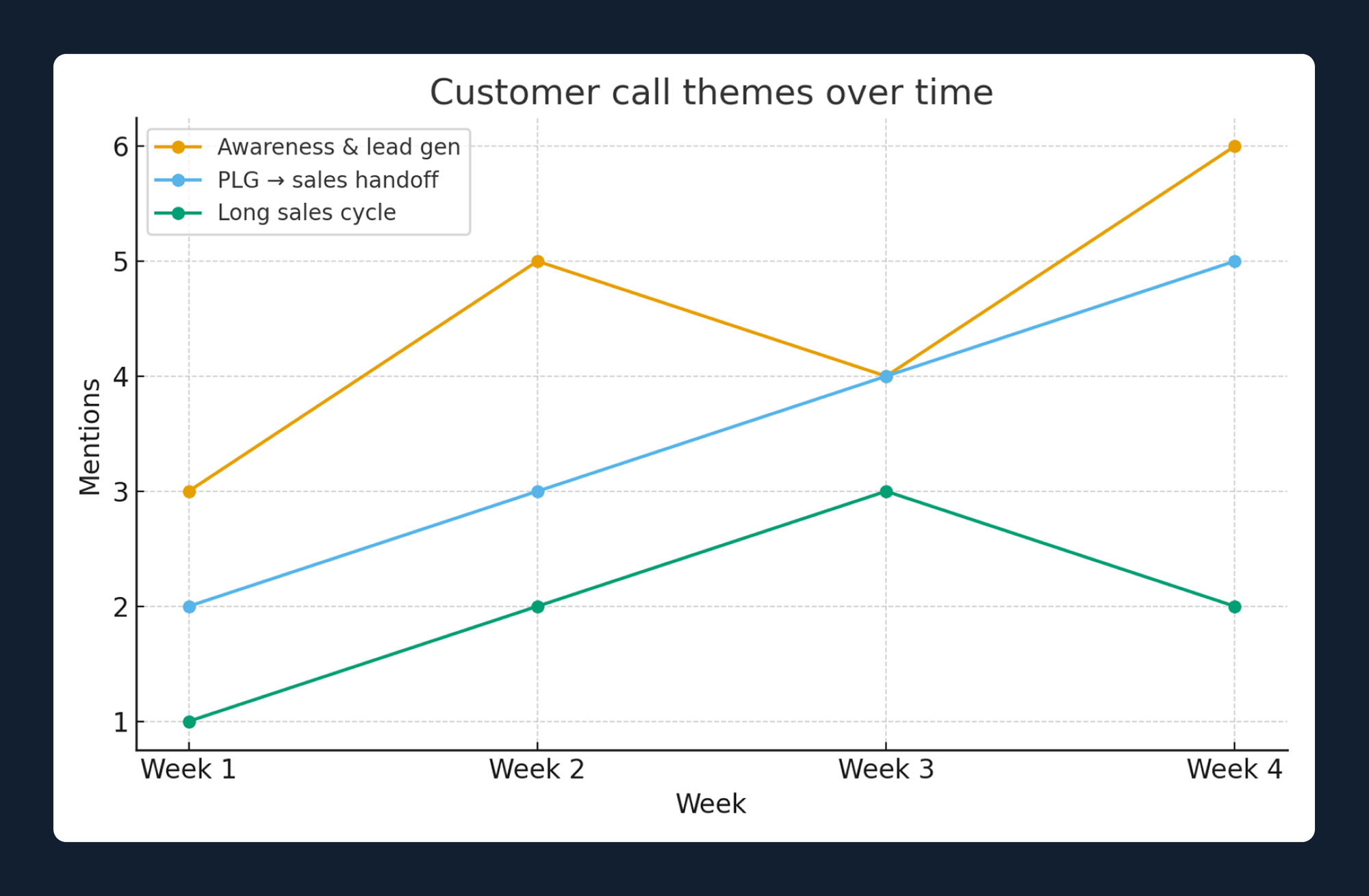
Get closure
Selling successfully means closing more deals. But, you won't win them all. I know well. People will inevitably ghost you for seemingly no reason. Most likely because they're just super busy – just like you. You can do everything right and still lose a sale. It happens, but not getting closure is worse that not knowing why you lost the deal. Don’t be afraid to follow up, or try new angles on cold deals.
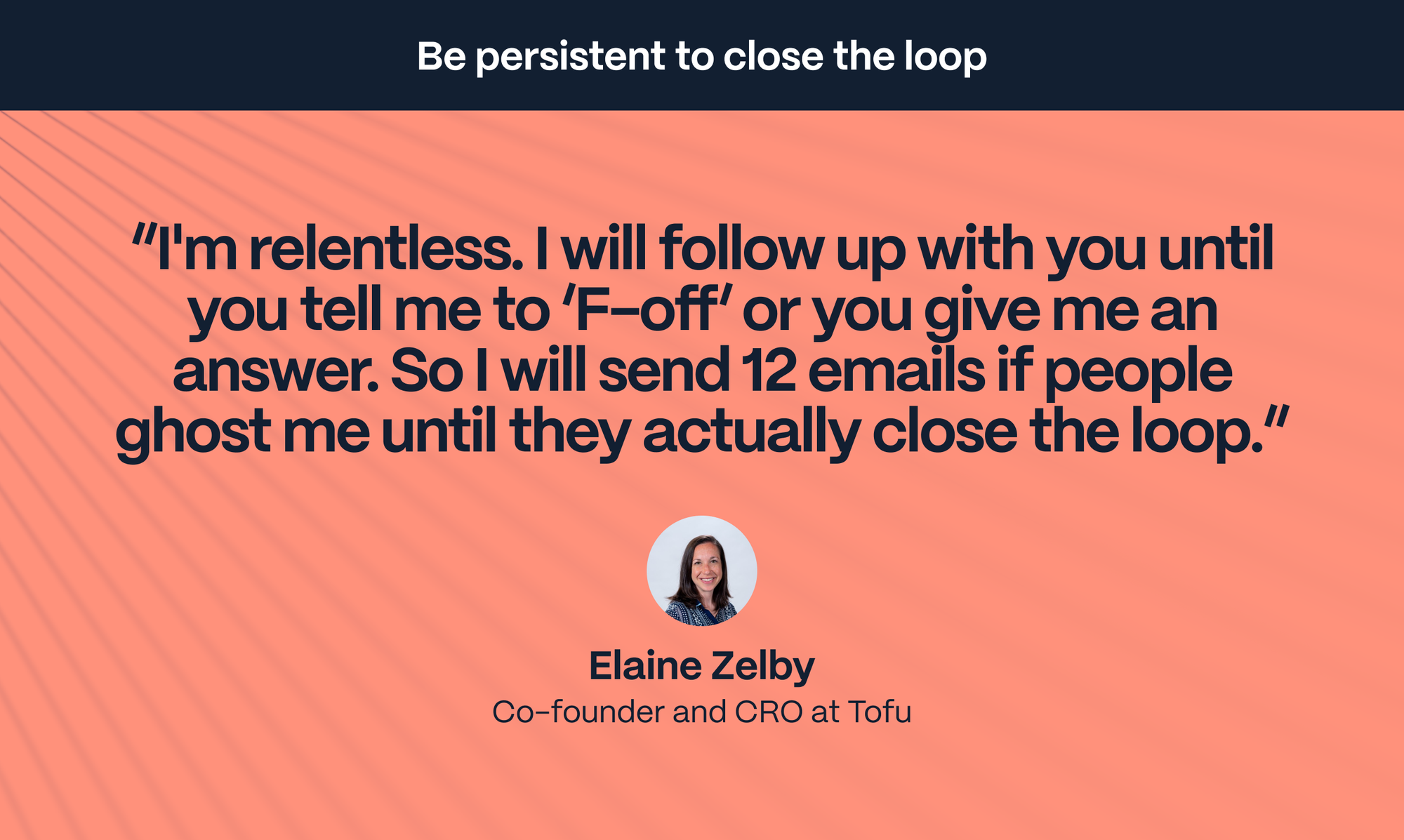
Oftentimes, people just get busy. People have other priorities and it might not be right now, but three months later on my 47th email, they're like, “Hey, so sorry, we finally made that hire we were talking about. Now we're ready to go.” And I think that also goes a long way.
- Elaine Zelby, co-founder and CRO at Tofu
Sales as continuous discovery
One mistake I see founders making is handing off the sales process to someone else as soon as possible. Sales and customer discovery are one and the same. Sales is a core research initiative that keeps you close to your target market.
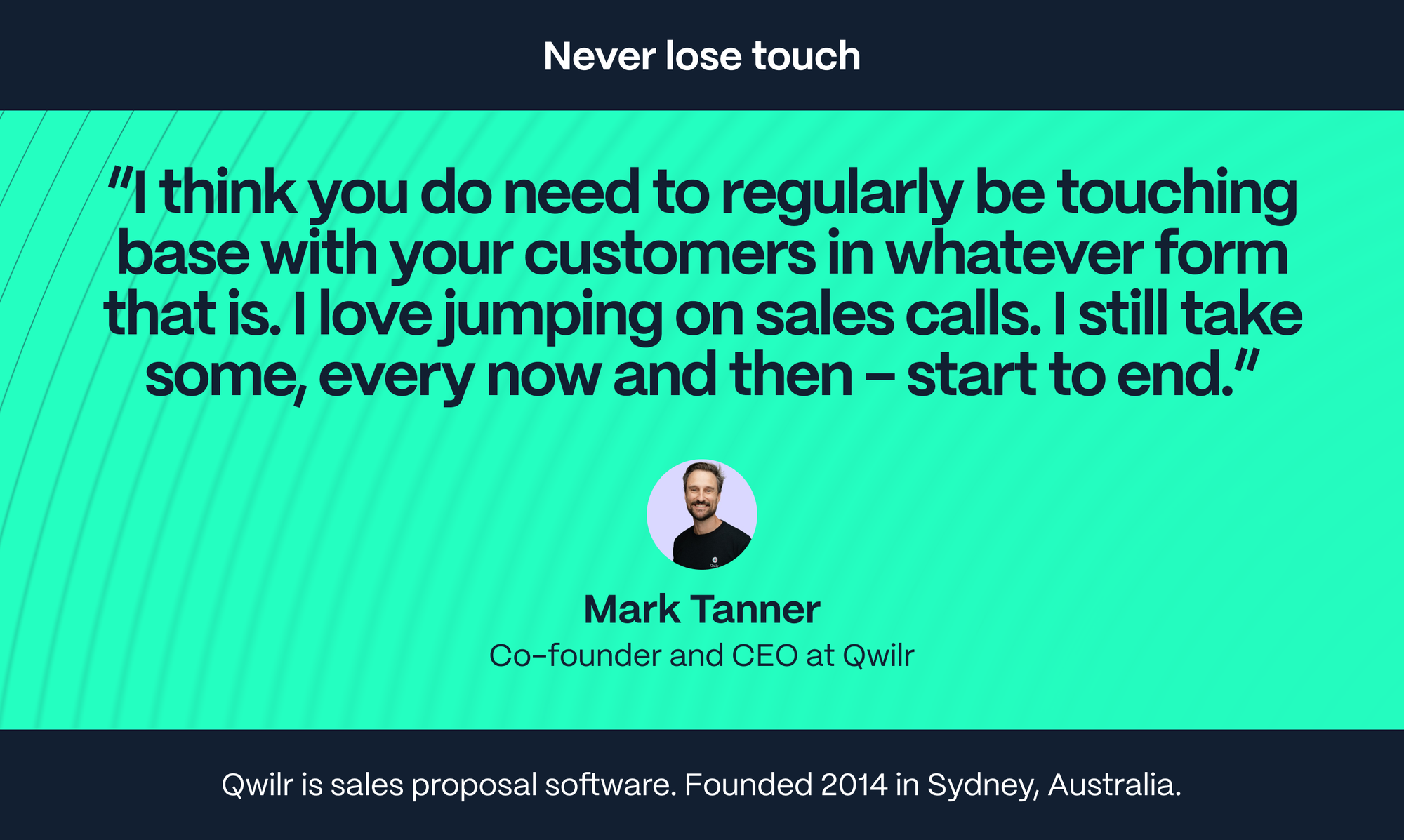
I call this "continuous discovery” and you should do it through your PMF phase and continue to hone your own process.
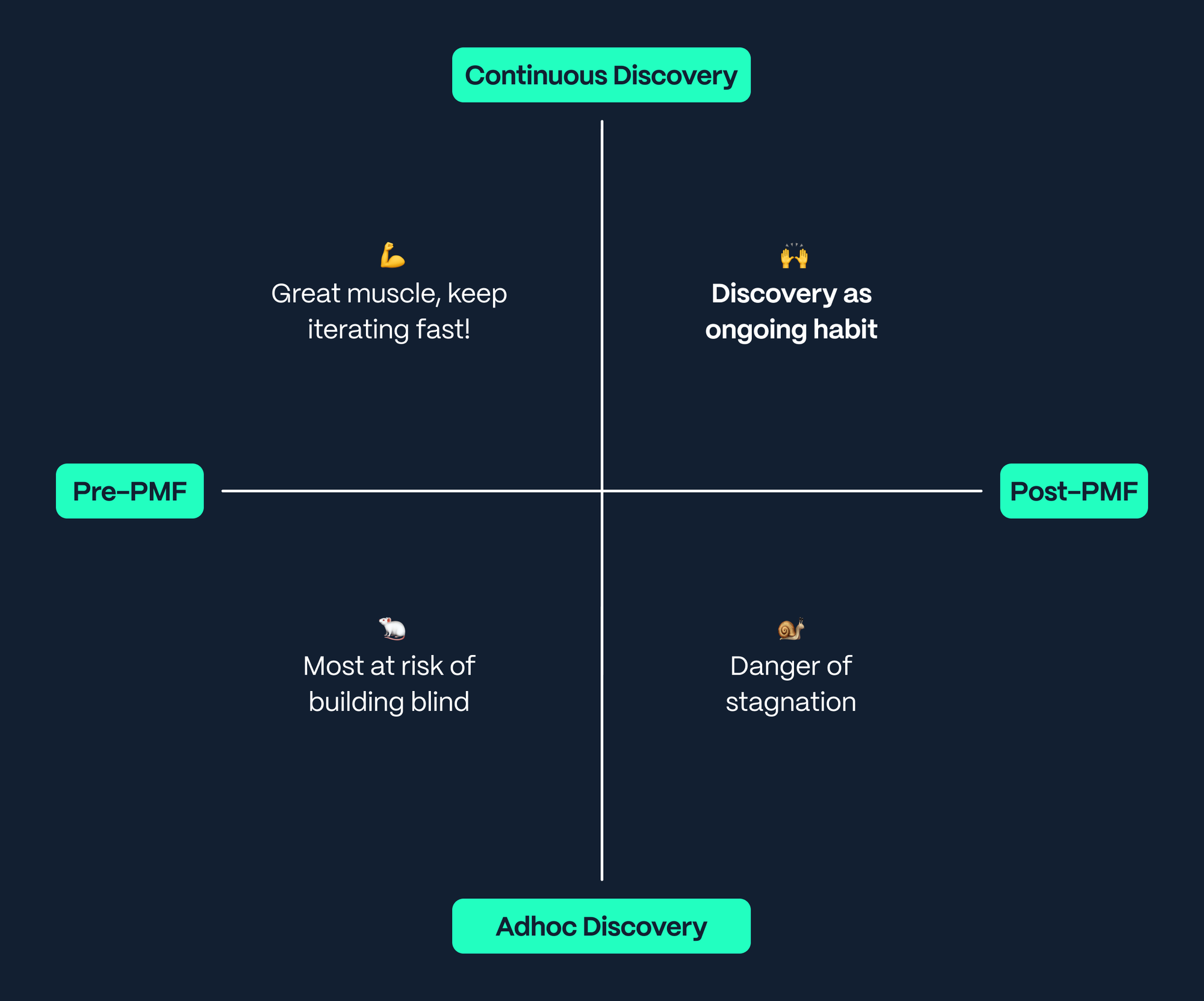
Learn from those that came before you, yes, but then make it yours.
Get our newsletter
Subscribe for weekly essays on GTM, RevTech, and Clarify’s latest updates.
Thanks for subscribing! We'll send only our best stuff. Your information will not be shared and you can unsubscribe at any time.
